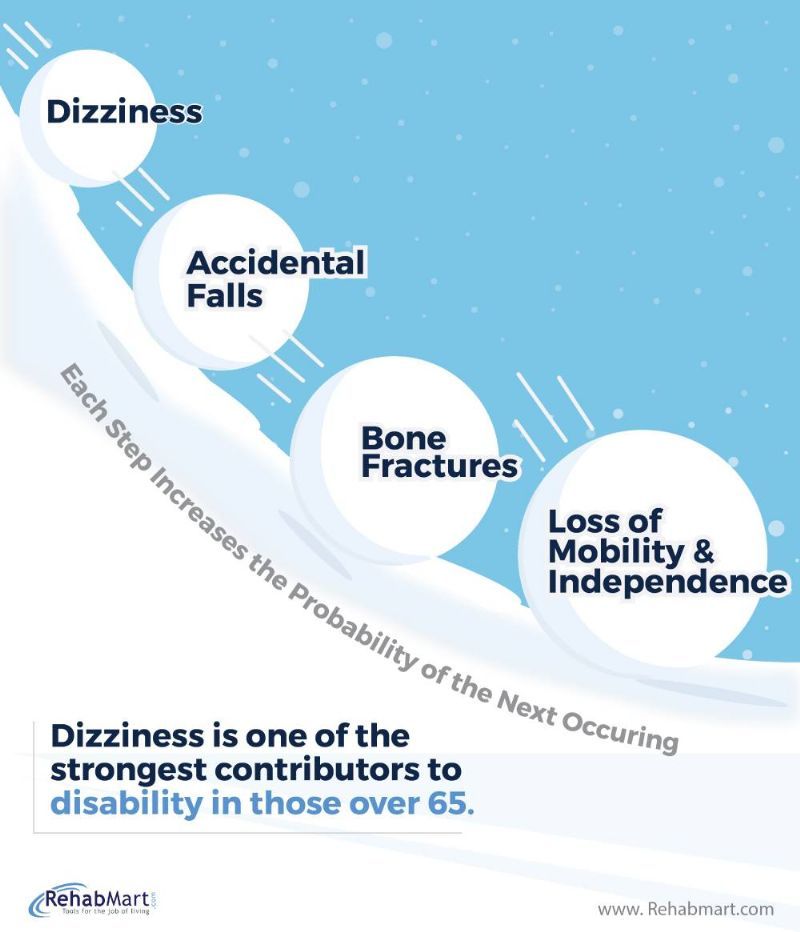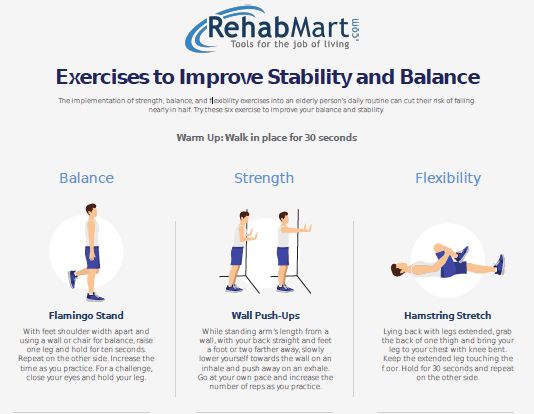 Written by Megan Smith, PT
Written by Megan Smith, PT
When you’re young, falling is no big deal. Kids fall down all the time and we tell them to just get up and brush themselves off, but the same is not the case for older people.
As you age, the bones become more brittle, coordination and balance decline, and falls become not only more common, but also more dangerous. Additionally, vision declines and your ability to walk confidently without falling decreases.
And the older you are, the more likely you are to have balance problems. The longer you live with these balance problems, the more likely you are to fall.
Let’s look at the numbers.
Among all adults older than 65, at least 30% of them will experience a fall within one year’s timespan. That number increases dramatically as you age. So much so, that around half of all adults over 80 will experience at least one fall every year.
In addition, these falls are typically associated with stays between 5-20 days in the hospital, averaging over $3000 in medical bills.
Now those are already some pretty intimidating numbers as it is, but they get even scarier when you think about how fast the elderly population is growing.
As of 2010, roughly eight percent of the earth’s population was elderly (65+). By 2050, this number is expected to double to 16% of the earth’s population, which works out to be about 1.5 billion adults who are older than 65.
At today’s rate, we can expect at least 450 million elderly adults to experience a fall in the year 2050.
And the scary part?
Accidental falls are the number one cause of death in elderly adults. 
Based on all these statistics, it’s easy to see that a change needs to be made in order to reduce the rates of falls in our elderly population.
Thankfully, although aging comes with the decline of certain systems, this decline can be slowed and even reversed with a simple treatment.
And the best part about it? Practically anyone can undergo this treatment from the comfort of their own home, and it doesn’t cost them anything but time.
Luckily, that’s not the case here.
When it comes to maintaining balance into old age, the term “use it or lose it” is the golden rule to stay graceful and coordinated.
That’s right. The most effective plan of action to halt and even reverse this aging process is good old physical activity.
So effective, in fact, that the implementation of strength, balance, and flexibility exercises into an elderly person’s daily routine can cut their risk of falling nearly in half.
The problem is that the elderly population has been proven to have the most sedentary and physically inactive lifestyle of all other age groups, most likely due to fear of falling or getting hurt.
That being said, if you’re careful and dedicated, it’s easy to improve your health and balance simply by performing the science-backed routine below. Following this routine consistently will go a long way in improving your strength, balance, and flexibility.
Download this free Balance Exercise Chart PDF

Strength, balance, and flexibility exercises should be the foundation of an elderly adult’s workout routine, helping to increase your self-esteem, quality of life, level of independence, and life expectancy.
So why not do yourself and loved ones a favor and take advantage of this convenient and totally free treatment for age-related weakness and balance problems? It could save your life or theirs.

Megan has been a part of Rehabmart since its inception nearly 20 years ago. For the past several years she has been enjoying her role as HR Director while maintaining her Physical Therapy license. When she isn't working on her next in-service or working to find a new team member, she enjoys her five children, helping those who have PT type ailments, baking, practicing yoga, and working out.